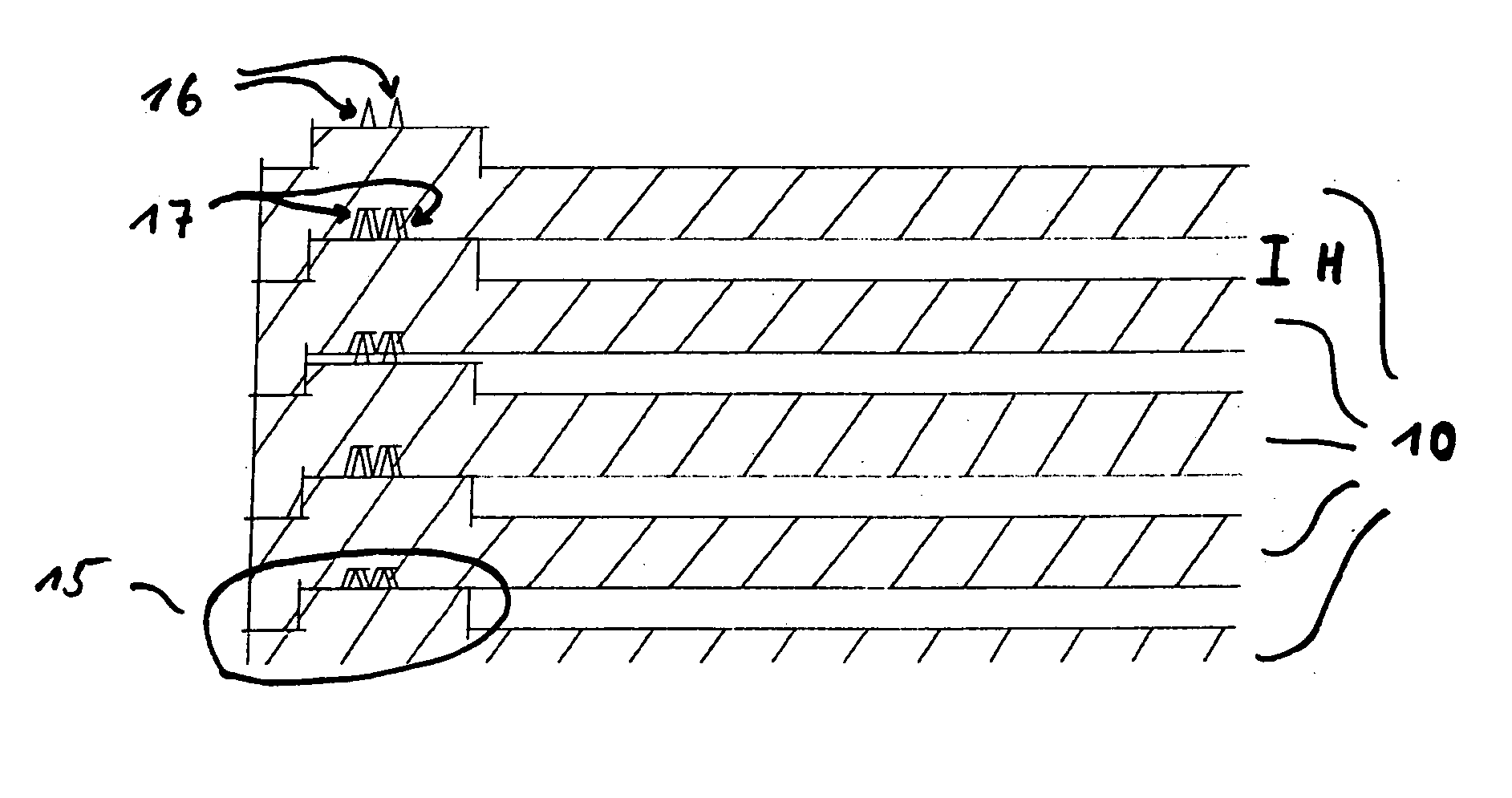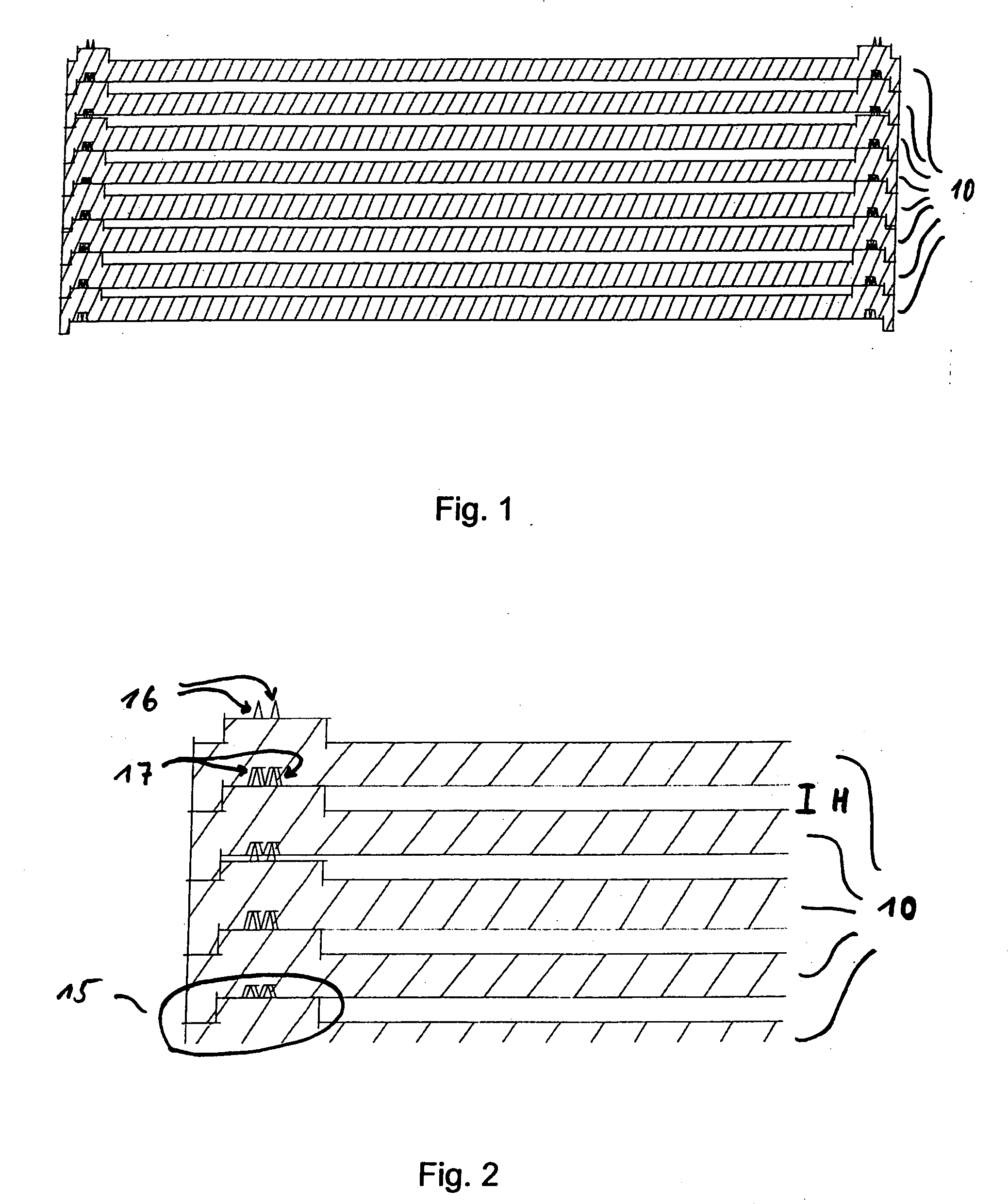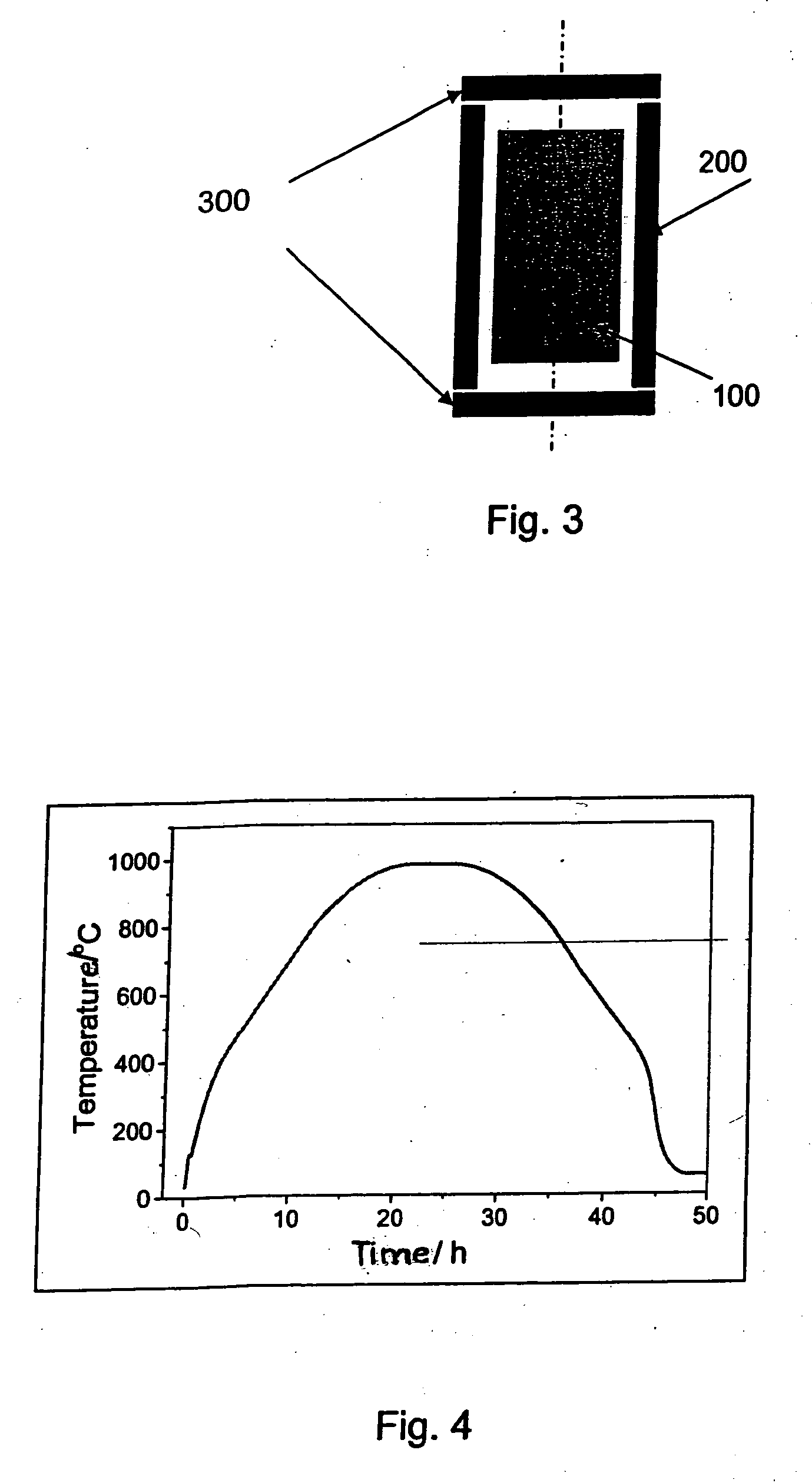Device and process for heating III-V wafers, and annealed III-V semiconductor single crystal wafer
- Summary
- Abstract
- Description
- Claims
- Application Information
AI Technical Summary
Benefits of technology
Problems solved by technology
Method used
Image
Examples
example 1
[0079] A SI VGF GaAs crystal having a target diameter of 100 mm is grown by a VGF type process described in more detail by Th. Bünger, D. Behr, St. Eichler, T. Flade, W. Fliegel, M. Jurisch, A. Kleinwechter, U. Kretzer, Th. Steinegger, B. Weinert in Mat. Sci. Technol. B80 (2001), 5, and, after heat treatment, cropping, cylindrical grinding, flattening and sampling for the characterization of the initial status, the crystal is further processed to obtain wafers by in-hole-sawing to yield a standard thickness d0=(725±8) μm. The wafers are edge-ground, purity-etched, washed, dried and stored until use under a non-oxidizing atmosphere (N2) by means of standard technology.
[0080] The charging of the wafers into the cassettes (diameter about 100 mm) of the invention is carried out in a laminar flow box. All cassettes of the device are filled with wafers (partially by dummy wafers). The free space above the wafer is 0.3 mm.
[0081] The stacked cassettes are completed to form an annealing as...
example 2
[0089] Unannealed, cylindrically ground and notched SI VGF GaAs single crystals having a diameter of 152 mm are processed to wafers having a mean thickness of (774±8) μm by means of wire lapping. The wafers are purity-etched and damage-etched and are placed, as described in the first example, into the cassettes according to the invention, having an inner diameter of about 153 mm and providing a height of the free space above the wafers of 0.4 mm. The heat treatment is carried out at 980° C. with a maintenance time of 4 h. Heating and cooling rates are identical to the values mentioned in the first example. The operating pressure of N2 / H2 process gases at the nominal temperature is 12 bar, and the hydrogen content is 1 vol. %.
[0090] The annealed wafers as well as the comparison wafers originating from the same crystals are edge-ground, laser-marked, damage-etched as well as double-sided pre-polished and one-sided final polished as well as finally purified. The final thickness of the...
example 3
[0098] Three unannealed and three crystal annealed SI VGF GaAs single crystals, each having a target diameter of 150 mm, are processed, after cropping and cylindrical grinding, to wafers having a mean thickness of (770±8) μm by means of wire lapping. The wafers are purification-etched and damage-etched, and, as described in the first example, are placed into the cassettes of the invention having an inner diameter of about 153 mm and a free space height of 0.4 mm. The heat treatment is carried out at 980° C. for a maintenance time of 4 h. Heating and cooling rates are identical to those mentioned in the first example. The operation pressure of the N2 / H2 process gases at the nominal temperature was 11-13 bar, the hydrogen content was 1 vol. %.
[0099] The annealed wafers are edge-ground, laser-marked, damage-etched as well as double-sided pre- and one-sided final-polished as well as final-polished according to standard procedures. A part of the wafers is double sided pre- and one-sided...
PUM
| Property | Measurement | Unit |
|---|---|---|
| Temperature | aaaaa | aaaaa |
| Temperature | aaaaa | aaaaa |
| Length | aaaaa | aaaaa |
Abstract
Description
Claims
Application Information
 Login to View More
Login to View More - R&D
- Intellectual Property
- Life Sciences
- Materials
- Tech Scout
- Unparalleled Data Quality
- Higher Quality Content
- 60% Fewer Hallucinations
Browse by: Latest US Patents, China's latest patents, Technical Efficacy Thesaurus, Application Domain, Technology Topic, Popular Technical Reports.
© 2025 PatSnap. All rights reserved.Legal|Privacy policy|Modern Slavery Act Transparency Statement|Sitemap|About US| Contact US: help@patsnap.com



